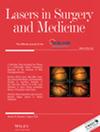Percutaneous delivery of liquid tetracycline using a thermal resurfacing drug delivery system for the treatment of festoons
Abstract
Objectives
To examine the effects of percutaneous tetracycline delivery to the malar area using a thermomechanical device (Tixel) in patients suffering from festoons.
Methods
This retrospective study included patients who underwent combination treatment with a thermomechanical device (Tixel) followed by application of topical tetracycline 1% at two private clinics between 2019 and 2023. Demographic and medical data, treatment parameters along with before and after treatment photographs were retrieved retrospectively. All patients were asked to answer a questionnaire, assessing self-reported pre and posttreatment disturbance, patient global impression of change (PGIC) score, overall satisfaction with treatment, and the onset and duration of treatment effect. Finally, three masked reviewers evaluated and graded the severity of before and after treatment photographs.
Results
Twenty healthy patients received the combination treatment. The mean age was 59.4 ± 8.2 years (range: 45–72 years), and 90.0% (n = 18) were female. The number of treatment sessions per patient ranged from 2 to 8, mean of 5.0 ± 1.9, performed at 5.4 ± 1.2-week intervals. The masked reviewers' grading scores demonstrated a significant improvement (2.81 ± 1.3 before vs. 1.6 ± 1.1 after, p < 0.001). The self-reported disturbance caused by the festoons improved significantly as well (4.7 ± 0.98 vs. 1.7 ± 1.1, p < 0.001). On the PGIC score, 85% (17/20) reported moderate (grade 5) to significant (grade 7) improvement of symptoms and life quality after treatment. Improvement onset was reported to occur 11.2 ± 6.6 days after the first treatment (range 2−30 days), and 90% (18/20) of the patients reported improvement lasting at least 4 months after completion of the second treatment.
Conclusions
Topical tetracycline application following Tixel treatment induced significant improvement in patient with festoons.

 求助内容:
求助内容: 应助结果提醒方式:
应助结果提醒方式:


